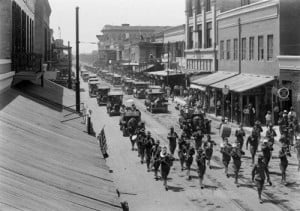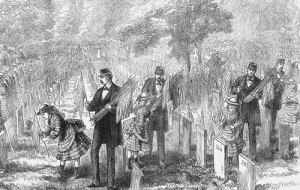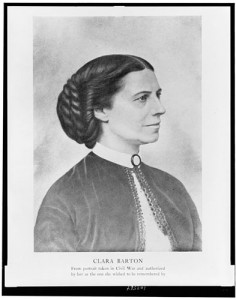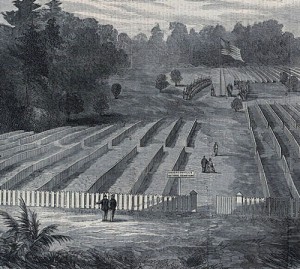Memorial Day, Clara Barton and flags

Three major national holidays that unfurl flags are fast approaching: Memorial Day at the end of May, Flag Day on June 14 and the Fourth of July. The problem with such familiar occasions is that we often forget their original meaning and focus instead on picnics and fireworks.
Shortly after the Civil War, Memorial Day was established as a way of honoring the hundreds of thousands of soldiers who died. Different claims have been made about who started the annual remembering of those who fell, but Waterloo, New York, claims it began there 150 years ago.

According to an article in the Veterans of Foreign Wars magazine, a drugstore owner sparked the idea of remembering the fallen men from the town, and the commander of a local military unit brought it to fruition in May 1866. Nearly a century later, President Lyndon Johnson officially proclaimed that Waterloo birthed Memorial Day.
Originally known as Decoration Day from the practice of placing flowers, wreaths and other memorials on the graves of servicemen, Memorial Day gradually became the official name.

For decades, one of the main decorations on the graves, whether at Arlington National Cemetery or small graveyards across the nation, is the American flag. Communities, Boy Scout troops, church organizations and families carry out the annual tradition of placing small flags on every grave of every serviceman and servicewoman.
Memorial Day is also inextricably linked to Clara Barton, the founder of the American Red Cross, who created a flag to represent her organization. She was working in the Patent Office in Washington, D.C., when the Civil War broke out. According to the website of the ARC, “Barton risked her life to bring supplies and support to soldiers in the field during the Civil War.”

Barton herself said, “I may be compelled to face danger, but never fear it, and while our soldiers can stand and fight, I can stand and feed and nurse them.”
At war’s end, she helped to bury thousands of Northern troops who died in Andersonville prison camp in Georgia. When she was done, she remarked, “I ought to be satisfied. I believe I am.” But not for long. When the Franco-Prussian War erupted in Europe in 1870, Barton risked her life there to serve the wounded and bury the dead.

She also came up with the idea of a flag to guard those who were noncombatants. “To protect herself,” the Red Cross recounts, “she fashioned a cross out of red ribbon she was wearing.” The result is the familiar white banner of the organization.

Returning to America, Barton continued her humanitarian efforts by comforting people in times of natural disasters. The Red Cross flag she created flew in American for the first time in 1881, 135 years ago, when she asked for funds to aid victims of a Michigan forest fire.
“Her understanding of the needs of people in distress and the ways in which she could provide help to them,” the ARC said, “guided her throughout her life.”
Two flags also guided her: the American flag and the Red Cross banner she invented.

Thank you for your article mentioning Clara Barton. It might be of interest to you that I have written a musical portrait of Clara Barton, telling the story of her life in song as a piano/vocal performance, available in CD, which I have done in Raleigh, N.C., Albuquerque, New Mexico, Hamburg, Germany, and, of course, in San Francisco and Lake County, California among other venues.